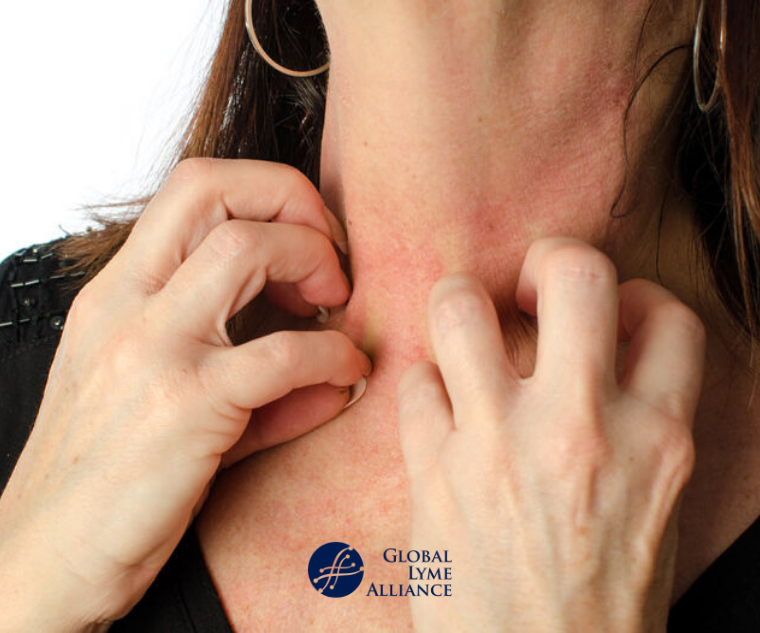The Role of Lymecare Alliance ahead of time Lyme Condition Research Study
The Role of Lymecare Alliance ahead of time Lyme Condition Research Study
Blog Article
Comprehending Lyme Disease-- Essential Understanding for Avoidance
Lyme disease remains a substantial public health and wellness issue, mainly sent via the bites of contaminated ticks, specifically in regions with thick vegetation. The early identification of Lyme condition is crucial, yet numerous individuals continue to be uninformed of its indications or the environments that present the highest risk.
What Is Lyme Disease?
If left neglected, Lyme disease can proceed to extra serious phases, possibly affecting the joints, heart, and worried system. People may experience joint inflammation, neurological complications, or cardiac conditions. The illness can be challenging to identify, as its signs can simulate those of various other diseases. Diagnostic methods usually include a combination of clinical examination and research laboratory testing, consisting of serological assays to find antibodies against Borrelia burgdorferi.
Prompt acknowledgment and treatment are essential in handling Lyme illness and stopping issues, with very early antibiotic intervention usually causing beneficial results.
How Lyme Illness Spreads
Lyme disease mainly spreads out through the bite of infected black-legged ticks, also called deer ticks, which carry the bacterium Borrelia burgdorferi. These ticks are typically found in woody or grassy locations, commonly staying on shrubs or reduced plants. They require a blood meal from a host, such as animals or people, to reproduce and flourish.
Transmission commonly happens when ticks connect to the skin and stay for a prolonged duration, usually 24 to 2 days. The threat of infection increases with the period of attachment, as the microorganism is transmitted from the tick's saliva into the host's blood stream. Ticks can be energetic throughout warmer months, particularly in spring and summer season, making outside activities a potential danger for direct exposure.
While black-legged ticks are the key vectors, other types, such as the Western black-legged tick, can additionally transmit Lyme condition. It is important to be watchful in areas where ticks prevail. Preventative actions consist of wearing protective clothing, making use of tick repellents, and conducting comprehensive tick checks after outside tasks to reduce the chance of attacks and succeeding transmission of Lyme illness.
Symptoms and Diagnosis
Acknowledging the signs of Lyme illness is crucial for timely medical diagnosis and treatment, as very early intervention can substantially impact recuperation. The most recognizable very early symptom is the erythema migrans breakout, which looks like a circular, red lesion with a main clearing up, usually resembling a "bull's- eye." This rash normally develops within 3 to thirty day after a tick bite and might be gone along with by flu-like signs and symptoms such as fever, cools, tiredness, muscle mass aches, and migraines.

Diagnosis of Lyme condition mainly counts on professional assessment, taking into account the patient's signs and symptoms and potential exposure to ticks in native to the island locations. Research laboratory tests, consisting of enzyme-linked immunosorbent assays (ELISA) complied with by Western blot examinations, can support the medical diagnosis however are not clear-cut in early-stage Lyme illness. Trigger recognition and medical diagnosis are vital for the original source launching proper antibiotic therapy, which is most efficient when provided early in the illness course.
Prevention Approaches
Avoiding Lyme disease needs a positive approach, specifically for individuals that invest time in locations where ticks are common. In addition, tucking trousers right into socks and using tick-repellent products including DEET or permethrin can dramatically minimize the risk of tick add-on.
Consistently checking oneself, children, and animals for ticks after outside activities is critical. Ticks needs to be promptly removed making use of fine-tipped tweezers, grasping them as near to the skin's surface as feasible. It is recommended to shower within two hours of returning indoors, as this can help remove ticks before they connect.

Therapy Alternatives
Reliable administration of Lyme condition hinges on appropriate and prompt treatment options, which mostly involve antibiotic therapy. Early local Lyme condition is commonly treated with oral prescription antibiotics such as doxycycline, amoxicillin, or cefuroxime axetil for a duration of 10 to 21 days.
In cases of very early disseminated Lyme illness, where neurological or cardiac signs may occur, a longer program of oral antibiotics or intravenous prescription antibiotics might be warranted. For individuals experiencing relentless signs and symptoms after initial therapy, called Post-Treatment Lyme Illness Syndrome (PTLDS), an extra complicated management technique may be required. This can involve a multidisciplinary approach, addressing not just the physical signs however likewise psychological facets, as exhaustion and cognitive difficulties prevail.
It is vital for clients to you can try here engage in open interaction with their doctor to customize therapy strategies to their specific demands, making certain the very best possible end results in the monitoring of Lyme condition.
Final Thought
Lyme disease poses considerable health and wellness risks mostly due to its transmission by means of contaminated black-legged ticks. Continued recognition and education and learning about Lyme condition are necessary you could look here in minimizing its impact, therefore promoting much healthier areas and guarding public health and wellness versus this pervasive tick-borne illness.
Lyme illness primarily spreads through the bite of infected black-legged ticks, additionally understood as deer ticks, which lug the bacterium Borrelia burgdorferi. Lymecare Alliance.While black-legged ticks are the main vectors, other varieties, such as the Western black-legged tick, can additionally transmit Lyme illness. Preventative procedures include putting on safety apparel, making use of tick repellents, and carrying out detailed tick checks after outdoor activities to lower the chance of attacks and subsequent transmission of Lyme condition
Diagnosis of Lyme disease mostly relies on professional analysis, taking into account the person's signs and potential exposure to ticks in native to the island locations.Lyme disease poses considerable wellness risks primarily due to its transmission using infected black-legged ticks.
Report this page